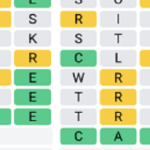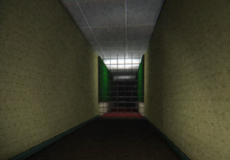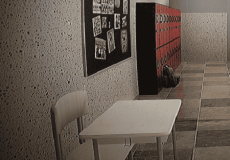
Castle of Temptation
Advertisement
Castle of Temptation places players inside a maze-like castle where focus and restraint are constantly tested. The player must explore interconnected rooms and halls filled with traps, hidden switches, and strange characters whose behavior is not always predictable. At first glance, the space appears simple—stone walls, locked doors, pressure plates—but it becomes clear that the environment is designed to mislead. Attention is the main currency. Lose it, and you risk making a mistake that resets your progress.
Advertisement
Similiar games
Castle of Temptation places players inside a maze-like castle where focus and restraint are constantly tested. The player must explore interconnected rooms and halls filled with traps, hidden switches, and strange characters whose behavior is not always predictable. At first glance, the space appears simple—stone walls, locked doors, pressure plates—but it becomes clear that the environment is designed to mislead. Attention is the main currency. Lose it, and you risk making a mistake that resets your progress.
Exploration Comes With a Price
This is not a game of brute force or fast reflexes. It’s built on timing, patience, and resisting the many distractions placed throughout the map. Some rooms offer puzzles that rely on sound cues, others present misleading visuals meant to draw the player into danger. There are NPCs that offer help or interfere, depending on how the player chooses to interact. The further you progress, the more the castle reveals its manipulative design, and every door opened leads to new uncertainty.
What Defines Castle of Temptation:
- Puzzle-solving combined with light platforming mechanics
- Nonlinear structure with hidden rooms and branching paths
- Characters that react to player behavior
- Multiple endings based on exploration style and choices
- Aesthetic based on gothic architecture with surreal distortions
The Temptation in the Title Is Real
Throughout the game, players are presented with choices that appear beneficial or harmless but have lasting effects. Accepting a gift, triggering an unknown lever, or choosing to speak to the wrong character can permanently change the castle’s layout or block off certain paths. This mechanic encourages second-guessing and replaying, as the game rarely offers explanations. Your best option is to observe and learn through trial, failure, and adaptation.
Castle of Temptation challenges the idea that progress should always be rewarded quickly. It expects players to slow down, observe patterns, and resist easy choices. While the game presents temptation as visual or narrative bait, the real challenge lies in staying aware. Those who take the time to understand the castle’s design will find paths others overlook. And those who rush may find themselves walking in circles, asking where things went wrong.
Discuss Castle of Temptation
























